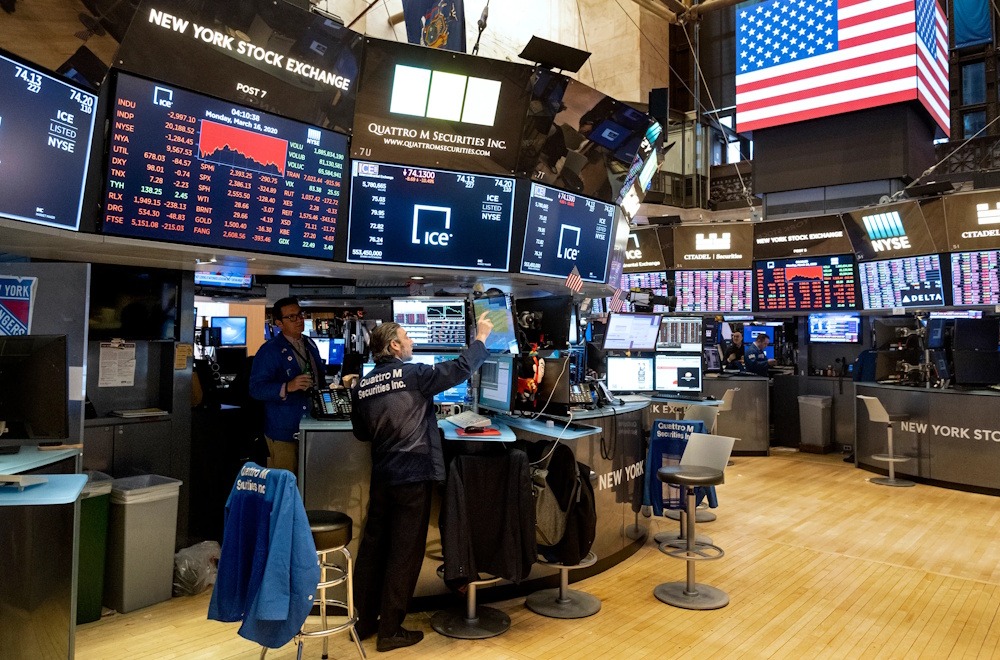
Nasdaq Futures concluded the week at unprecedented levels on Friday, buoyed by the Federal Reserve’s rate cut enacted the previous week and signals suggesting additional policy easing ahead. Recent advancements in U.S.-China trade negotiations have positively influenced investor sentiment. The tech-heavy Nasdaq Composite concluded at 22,631.48, reflecting an increase of 0.7% or 160.75 points, propelled by the robust performance of major technology firms. At the intraday peak, the tech-heavy index achieved a new all-time high of 22,645.11. All three major stock indexes concluded the day in positive territory. For the week as a whole, these indexes concluded in positive territory.
The Dow Jones Industrial Average rose 0.4%, or 172.85 points, to close at 46,315.27, achieving a new closing high for the index. Significantly, 14 of the 30 components of the index concluded in positive territory, while 15 ended in negative territory, and one remained unchanged. At the intraday peak, the blue-chip index achieved a new all-time high of 46,396.47. The S&P 500 increased by 0.5%, concluding at 6,664.36. This represented the benchmark’s latest closing peak. Among the 11 broad sectors of the market index, six concluded in positive territory, whereas five found themselves in negative territory. The Technology Select Sector SPDR gained 1%, whereas the Energy Select Sector SPDR experienced a decline of 1.3%. The fear gauge, the CBOE Volatility Index, experienced a decline of 1.6%, settling at 15.45. On Friday, trading volume reached 27.78 billion shares, surpassing the 20-session average of 17.41 billion shares. Friday’s trading volume reached its peak since early April. On the NYSE, decliners surpassed advancers with a ratio of 1.43 to 1. On the Nasdaq, a ratio of 1.42-to-1 indicated a preference for declining issues.
On September 17, the Federal Reserve, opted for a widely anticipated 25-basis-point reduction in the benchmark lending rate, bringing it down to a range of 4-4.25%. This marks the inaugural reduction in interest rates for the year 2025. The decision was nearly unanimous, with 11 of the 12 Fed voting members supporting a reduction of a quarter percentage point in the Fed fund rate, while only one member opposed this, advocating instead for a cut of half a percentage point. Nonetheless, the Fed’s dot-plot indicates two additional rate reductions of 25 basis points each this year, along with one rate cut of 25 basis points projected for both 2026 and 2027. A low-interest-rate environment will favor stock investing by lowering the discount rate, which in turn enhances the net present value of equity investments. High-growth sectors, including technology, consumer discretionary, and cryptocurrency, are poised to reap the greatest benefits.
President of the United States and Chinese leader Xi Jinping engaged in a telephonic discussion regarding the Chinese application TikTok. Both parties have advanced considerably in negotiations, although a conclusive agreement remains elusive. Late on Friday, President Trump stated, “TikTok deal is well on its way, as you know, and the investors are getting ready.” It is imperative that we secure the necessary signatures. Trump stated on Social Truth, “I just completed a very productive call with President Xi of China.” Progress has been achieved on several critical issues, including trade, fentanyl, the imperative to resolve the conflict between Russia and Ukraine, and the endorsement of the TikTok deal. The Dow increased by 1%, the S&P 500 by 1.2%, and the Nasdaq Composite by 2.2%. The Federal Reserve’s decision to cut rates, along with signals of additional monetary policy easing, has bolstered the confidence of market participants in riskier assets such as equities.
